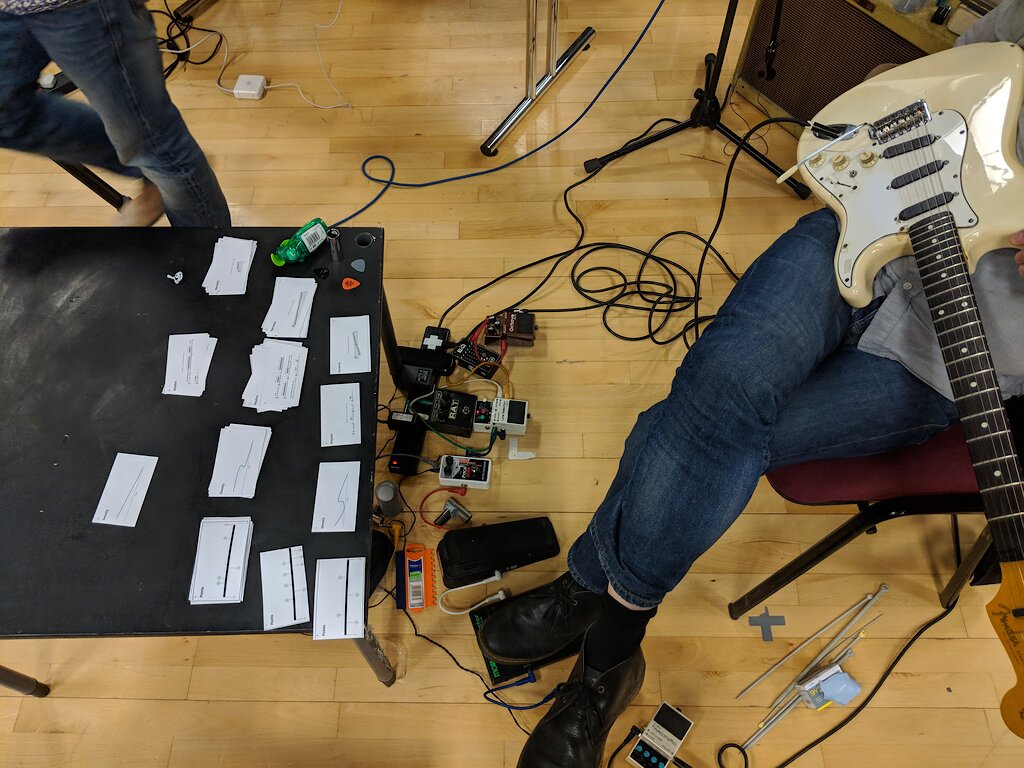2019 | Scores for a rehearsal process
Information
A series of pieces where the musicians structure an off-line design process themselves. The score describes these activities, rather than a performance.
The performers credit themselves as composers for these pieces under a creative commons license.
Scoring the rehearsal process, not the performance
The purpose of this work is to investigate what a score for a ‘rehearsal process’ might be (rather than a score aimed at a ‘realisation’ of a ‘performance’.) A parametric, modular score is given where musicians are encouraged to think about the workflow of a design process, rather than to generate sound in a responsive manner to visual stimuli.
Whilst plenty of scores from Medieval Music to Open Form composition address the challenges of creatively empowering performers, few address the actual rehearsal process itself: the when and why of collaborative decision making whilst in the act of assembling a piece. Self-Assembly Unit series of pieces explores these questions.
on timelines and improvisation
Timelines are often seen as restrictive by improvisers, and graphic score, whilst open-ended, still offers the possibility that the interpretation of even the most abstract visuals will be measured against the works previously made by a particular composer, or failing that, within a broader tradition to which the graphics might be perceived to belong. I wanted to reject both of these notions, by turning over the timeline construction as an explicit and defined process to the musicians, in such a way that the process of assembly here has both real-time, and off-line elements to it.
Modular score
Self-Assembly Unit Series is inspired by authorship debates and flatpack furniture. Self-Assembly Unit is a series of modular works which include the basic ingredients from which a piece might be rehearsed.
Reproducible research
In research, reproducible-research means that it is possible to inspect the working (generally: code, raw data, processing methods) behind the conclusions presented. I wanted to expose the ‘internals’ of a composition process to performers, and structure how the assembly of elements is made. To do this, all the internal elements that go into the process of making up a piece are exposed to the musicians, for change and modification. This is a different way of working to, for example, improvising around a stimulus, as longer-term structural decision making is required to define a collaborative sequence of events. Self Assembly Unit is a score for the workflow of assembly.
Do I call you performers or composers?
Self assembly unit makes no assumptions about a performance occurring from the score in real-time: there is no sense of ‘realisation’ (in a performative sense) here. Instead, design relationships are suggested around which the performer can generate a complex web of materials. This score then is entirely off-line and non-realtime. It also has nothing to do with the act of performance either, although it prepares the way for this. If you are musicians - a term encompassing performers and composers, then what am I? I’m happy with the idea of being designer for this piece. I’ve set the overall parameters, but the workflow of creativity is up to you.
Self Assembly Unit - Downloadable Toolkit
The Self Assembly Toolkit is in preparation, for release later this year.

